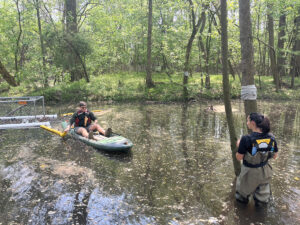News
Wayne Co. toxic spill exposes lack of NCDEQ transparency
CAFOs, Environmental, Neuse River Watershed, Regulatory, Sound Rivers, Uncategorized, Water Quality
Posted on September 7th, 2022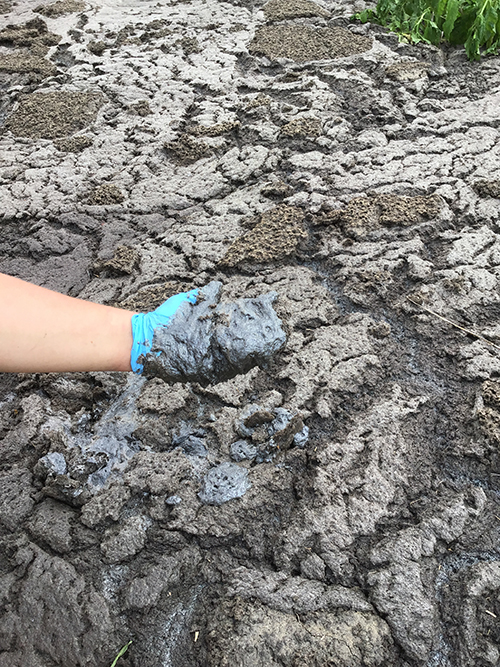
Espuma hecha de cerdos muertos, desechos de mataderos y carnes caducadas. (NCDEQ)
LEE ESTE ARTICULO EN ESPANOL AQUI.
READ THE SELC/SOUND RIVERS LETTER TO DEQ HERE.
A major spill of toxic foam at a Wayne County biogas facility and industrial swine operation polluted air, groundwater and surface water for weeks this summer, and the state agency charged with its regulation failed to notify the public.
Read the front page article on the Raleigh News & Observer here.
White Oak Farms/Legacy Biogas has operated a biogas-collection facility at the location since 2013, and though it has a long history of violations issued by North Carolina Department of Environmental Quality, the facility was allowed to continue to operate. Over Memorial Day weekend, that continued operation culminated in the rupture of the methane-capturing cap installed over a hog waste lagoon, covering a large area of the surrounding land with several feet of toxic foam that permeated the ground, entered the surface waters of Nahunta Swamp and released ammonia fumes described by one North Carolina Department of Environmental Quality inspector as overwhelming.
According to DEQ documentation, the spill continued for six weeks and the discharge took nearly two months to clean up by a firm specializing in environmental disasters. During that time, DEQ made no public announcement about a spill that created a public health risk from air, groundwater and surface-water pollution.
“This facility has a clear history of illegally discharging waste, and DEQ knew it. They failed to take meaningful action to prevent a major pollution event from happening, and failed to adequately notify the public,” said Sound Rivers’ Neuse Riverkeeper Samantha Krop. “This is people’s drinking water; it’s the water they swim in; it’s the water they fish from — and the agency responsible for protecting it isn’t doing its job. We worked with the Southern Environmental Law Center to send a letter to DEQ, requesting they take immediate action related to this facility’s permit, the clean up, and public notification of this pollution event. We also remain concerned about the DEQ’s ability to adequately regulate this industry and enforce permit conditions for facilities, with or without digesters. The current regulatory program has demonstrated time and time again its inability to keep these disasters from happening. In the past five years, we’ve had three major spills unrelated to weather events or hurricanes in the Neuse watershed alone.”
This spring, biogas technology, which utilizes covered lagoons or digesters, was being touted as “clean, renewable energy” by industry representatives as DEQ was holding public hearings to determine what a general biogas permit would like — while the major pollution event in the Neuse watershed was proving this unproven technology may not be clean at all and raising serious questions about the use of digesters and open pits to dispose of hog waste, the impact on our environment, and whether NCDEQ has the expertise and knowledge to regulate biogas facilities.
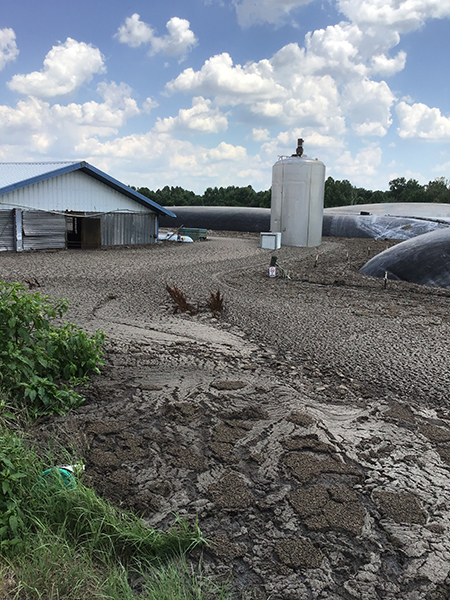
Permitted biogas facilities cap hog waste lagoons to harness methane and other gases produced by the decomposition of the waste. According to DEQ, however, this facility had no hogs on site. Instead, the lagoon held a slurry of decomposing expired meats from Smithfield Foods’ facilities, hog parts and fluids left over from slaughtering and dead hogs from other facilities chopped up into small pieces. The biogas being harnessed at this facility was from that slurry; the foam, a byproduct of its decomposition.
READ THE SELC/SOUND RIVERS LETTER TO DEQ HERE.
BACKGROUND
On Aug. 3, during a routine monitoring flight of the Neuse River watershed, Neuse Riverkeeper Samantha Krop flew over the White Oak Farms/Legacy Biogas facility and observed significant earthwork being done near the barns, lagoon and anaerobic digester (covered lagoon). After the flight, Sound Rivers learned about a significant spill at this facility by looking through DEQ’s Laserfiche records. Despite a large quantity of swine waste, dead hogs and food-waste-product sludge entering jurisdictional surface waters — as well as the release of gasses from a ruptured lagoon cover that pose a risk to human health — DEQ made no public statement about this spill, instead relying on an outdated public notification made by the facility in a local newspaper.
White Oak Farms has been operating as a hog CAFO (concentrated animal feeding operation) since the early 1990s; in October 2013, it received a permit from DEQ to cover a lagoon to generate biogas from swine waste and to expand the facility by 60,000 animals, a problematic exception to the swine facility moratorium that’s been in place since 1997. The facility has a history of compliance issues, and DEQ has cited the facility as non-compliant multiple times during routine annual inspections.
In 2019, the facility began adding off-site waste as approved by the Division of Water Resources. In June 2020, the Department of Agriculture State Veterinary Division gave the facility conditional approval to begin accepting dead hogs (off-site generated mortality) to incorporate into the digester system. DEQ issued a permit modification dated June 17, 2020, for the same. Dead hogs are added to a “dump pit” on site, then macerated into pieces (less than 2 inches in size) before being added to the digester.
On May 30, 2022, the facility self-reported a failure of the digester cover to DEQ. This resulted in a discharge of “foam” waste material from the digester lagoon. DEQ staff were on site on May 30, May 31, June 3, June 7 and June 23, 2022, confirmed the discharge and observed the efforts made to contain the “foam” pollutant. During site inspections, ruptures in the digester cover were identified, and discharge of the foam product from the digester into the surrounding environment was observed. “Foam waste product” was observed in surface waters of Nahunta Swamp.
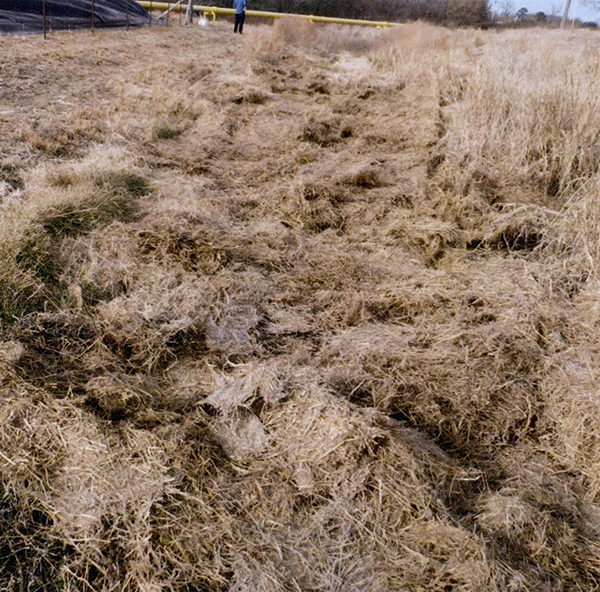
DEQ was unable to provide neither an estimated volume of discharge from the digester, nor an estimated volume of waste that ended up in surface waters. Based on communications with DEQ regional staff, as of July 20, 2022, discharge of the foam had ceased. It is unclear where the waste was disposed of. Aerial photos taken on Aug. 23, indicate cleaning is not complete.
It should be noted that during the February 2022 routine inspection by DEQ, the facility was found to be non-compliant, and there was evidence of a discharge — unreported to DEQ — which the facility attempted to cover up by layering hay over about four inches of the foam, according to DEQ reports.
While DEQ was responding to the digester over rupture and spill of hog waste, dead hog, and food-waste foam this spring, the agency was in the process of developing the general permit for swine waste digester systems. This general permit was issued on June 30, six days prior to the issuance of a Notice of Violation to White Oak Farms for this spill. Sound Rivers, and many other environmental advocates, community groups and residents have opposed this general permit, given its lack of assurances that biogas facilities will not be polluting the environment or surrounding communities.
It is Sound Rivers’ understanding that DEQ staff performing inspections of industrial hog facilities have not been adequately trained in the inspection of digester systems or covered lagoons, and DEQ Central Office was aware of repeated issues and concerns identified by DEQ regional field staff.
DEQ did not report or announce this issue to the general public. The facility put a public notice in the local paper stating a “wastewater foam discharge of greater than 15,000 gallons occurred on May 30, 2022, and was contained on May 31, 2022” and that 37,400 gallons reached wetlands.
Based on DEQ’s site inspections after May 31, the date of containment is not accurate, and the facility’s claim that only 37,400 gallons were discharged is a gross underestimation. Based on the facility’s self report to DEQ from this past July, they stated more than 3 million gallons of foam were released from the digester. They also reported that all 40,095 gallons discharged to the swamp were recovered, suggesting that all waste contamination was removed from the swamp. They maintained that no waste reached or was cleaned up with jurisdictional waters.
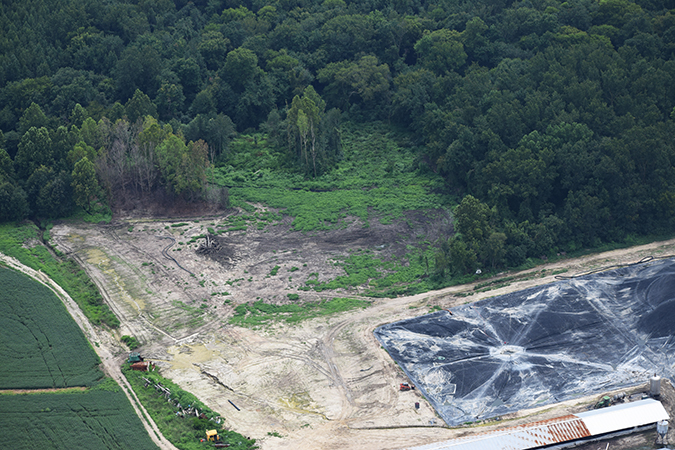
IMPACTS
On the southeastern portion of the property, trees have been cleared in the area impacted by the discharge. The suspicion, based on historical aerial photography/satellite imagery, is the trees may have died due to either inundation by an earlier, unreported foam discharge or groundwater contamination.
There are two groundwater monitoring wells on the southern portion of the property between the digester/covered lagoon and Nahunta Swamp. Water samples collected from these wells show extremely concerning levels of contaminants present.
A large, unusual fish kill occurred downstream of Nahunta Swamp in Contentnea Creek, from Snow Hill to Grifton, between May 27-29. There is no confirmation that the spill event and fish kill are related, however, based on timing and proximity, there is belief that previous ongoing discharges from this facility may have contributed to the fish kill.
Sound Rivers will be updating this story as new information becomes available.
Related News
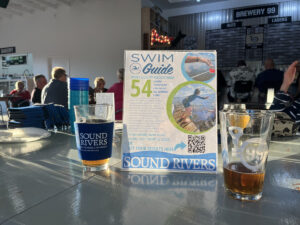
Swim Guide gearing up for a seventh season
April 11th 2024
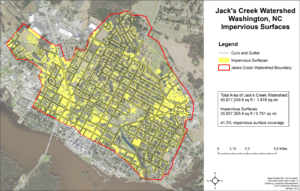
Feedback needed for Jack’s Creek plans, projects
April 11th 2024
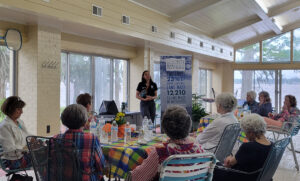
Pamlico-Tar Riverkeeper talks water quality
April 11th 2024
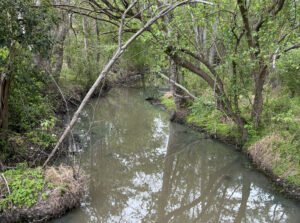
Pamlico-Tar Riverkeeper investigates Maple Branch turbidity
April 11th 2024
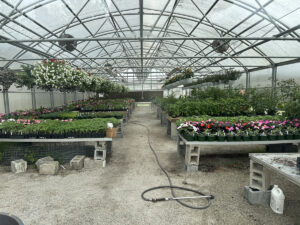
New cistern project on go
April 11th 2024

April Match in full swing!
April 4th 2024
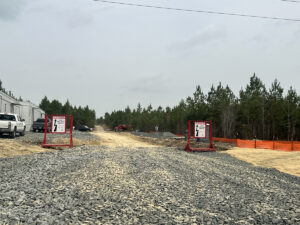
Pre-construction, muddied waters already an issue at Energy Center
April 4th 2024
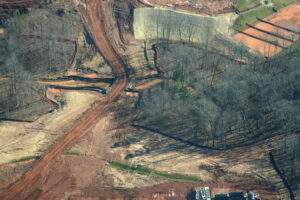
Riverkeepers request changes to state permit
April 4th 2024
